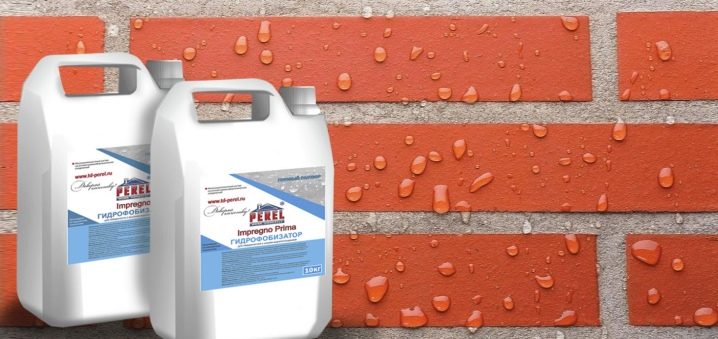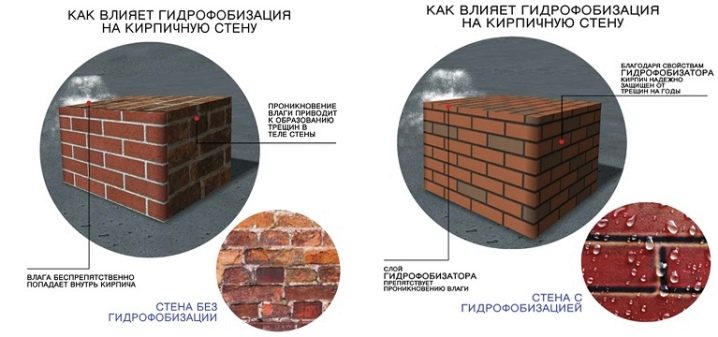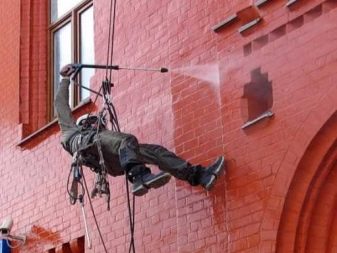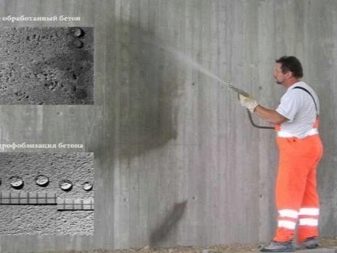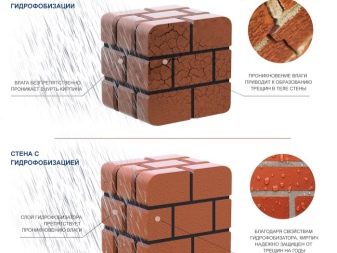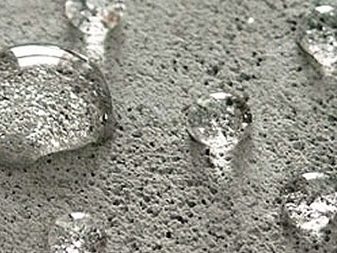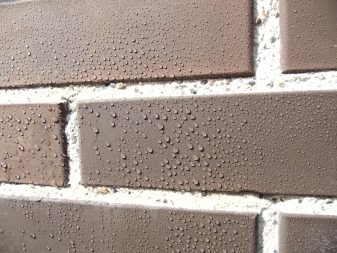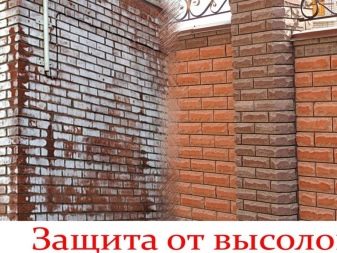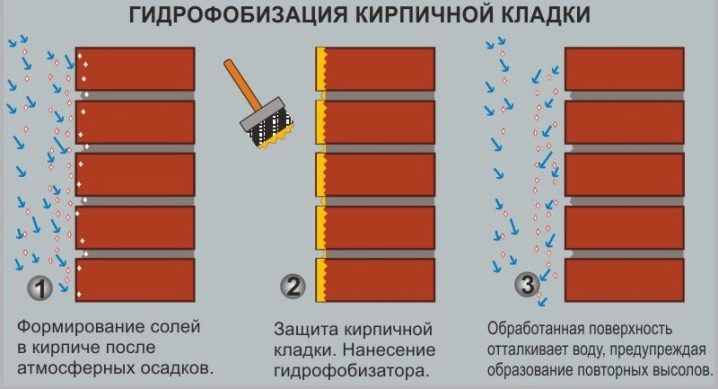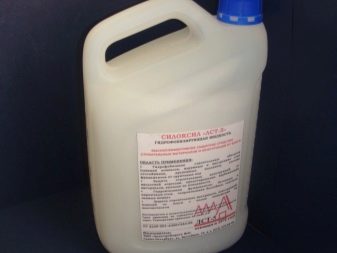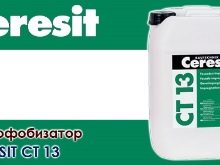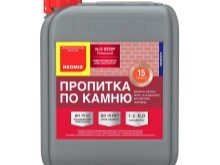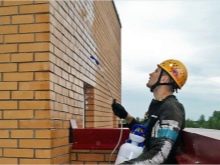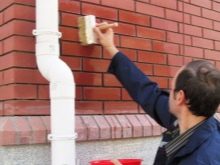Which water repellent for bricks to choose?
Brick is very often used in various construction works, and it is valued for its special qualities. And in order to improve the frost resistance of the material and not allow it to collapse quickly due to external factors, experts recommend treating the masonry with a special water-repellent agent. This will help significantly extend the life of the brick.
Special features
Water repellent bricks appeared on the construction market for a long time. Of course, in our time, the choice is much larger, and modern products are of high quality. Treatment with water repellent helps to solve many problems and significantly extend the service life of the brick. The brick itself is a durable material.
But unfortunately, due to weather conditions and numerous factors, it can break down over time. This is a logical explanation.Brick, like many building materials, has a porous structure that absorbs moisture perfectly. And after the onset of cold weather, wet crumbling brick begins to break down from the inside. Therefore, even such material needs reliable protection.
Water repellent will not need to be carried out often. If you immediately treat the surface of the material with this tool, then the next time it will need to be done only in ten or even fifteen years. This will help protect the brick from moisture, mold and mildew. The fact is that This protective material is easily absorbed into the brick structure, thereby forming a protective film not only outside, but also inside. Thanks to this treatment, any moisture will not penetrate into the brick structure, and the drops will roll down on its surface.
In addition, it is worth mentioning that this protective coating perfectly tolerates temperature differences, so that it can be safely used even in severe weather conditions.
Criterias of choice
In the construction market you can find a diverse range of water repellents, which are great for masonry.Let us see which one is better and what to look for when choosing this material.
Of course, it is worth reading the reviews of consumers who already have experience with similar materials. But you also need to pay attention to the country of production. Undoubtedly, Germany receives a large number of positive reviews. But the products from domestic producers also showed themselves well.
In order to maximally protect the facade from external influences and extend its service life for many years, experts recommend choosing a silicone water repellent. Such a tool is absorbed very quickly, which will speed up the construction process. In addition, it is based on silicone, therefore not washed off. This option is the best and expensive. But there are other types of this tool.
Perhaps, the most available mixture is a water-repellent based on H-siloxanes. This tool is also well absorbed and has good properties, allowing you to repel moisture from the surface of the brick. In addition, there are funds based on water, however, they are not always durable and their actions are unlikely to last for ten years.But three or four years is enough.
And also when choosing a tool you should choose a water repellent for bricks. Since there are universal means that are suitable for a variety of surfaces, but in practice they cannot always reliably protect a brick surface. By choosing this or that tool, you can give the facade an unusual look.
Most of the products form an invisible protective film that is always transparent, but you can choose another option. For example, some manufacturers produce a liquid to protect the brick, which, after drying, forms droplets, allowing you to achieve a unique effect after the rain.
In addition, pay attention to the depth of penetration of your chosen means. As a rule, such a liquid must penetrate to a depth of two centimeters, thereby forming a reliable protection. And also on the packaging should be indicated service life. There are more affordable options, the protection of which lasts a maximum of three years. After that, the facade will again need processing.
In addition to the fact that water repellents differ in their composition and price, they also differ in the method of application.For example, there is a surface blend. As you understand, such a liquid is exclusively applied to the surface of the brickwork with a brush or roller. As a result, a protective film is formed. And there is a volume, which is not so easy to use. During the application of this tool on the surface special holes are made, and the liquid is injected into them, like an injection. Typically, such tools are more often used for concrete structures, and for brick ones, the surface variant is also excellent.
If you plan to plaster or paint a wall after treatment with a water repellent, it is important to consider the fact that silicone-based liquid will not suit you. The surface with such a film will not allow to put on it any finishing materials. Therefore, for such a case it is best to choose a tool based on acrylic copolymers. This tool also copes with the protection of the facade from external influences.
Manufacturers
In order to make it easier for you to choose the right product, we have prepared a small overview of those brands that have proven themselves only from the best side.
Aquasil Available in both water-based and silicone-based.This tool has an excellent water repellent effect, completely safe and non-toxic. The fluid is universal and suitable for various surfaces, allowing them to extend their service life for decades.
"Siloksil" - This is a popular water-based tool that is convenient to use and completely environmentally friendly. The liquid is easy to apply and quickly absorbed. Differs in long service life.
Another popular remedy is Ceresit. Its main difference is that it penetrates the surface as deeply as possible, forming a reliable protection. But also pay attention to NEOMID. This tool not only copes with the protection of the new facade, but also helps to eliminate some problems from the old one. For example, salt stains, which are often formed on the surface of a brick.
Such means as "Doomed", also contains additional substances that allow you to remove salt stains and even mold. It is best to apply this remedy on the old surface two to three times. When working with this tool it is recommended to be extremely cautious, since it contains flammable substances.
Tips and tricks
After the material is selected, a logical question arises - how to apply the tool correctly. To do this, use the tips and recommendations of experts, which are sure to be useful to each of you:
- As a rule, the water-repellent agent is a concentrate, so before use it is recommended to dilute it with plain water.
- Before applying the liquid to the surface of the brick, make sure that it is thoroughly cleaned and does not contain any traces of mold or mildew. If necessary, the surface is recommended to be treated with special antiseptics, and only then proceed to work.
- Brick, unlike concrete, has a less porous surface, so it will be enough to apply one layer of special agent. If the surface needs double treatment, then this should be done after fifteen to twenty minutes.
- After applying the layer, the surface should be slightly shiny. If this does not happen, then most likely you have caused an insufficient amount of liquid.
- It is necessary to work with a water repellent agent only at a positive temperature. The weather should be without rain, as the surface should be protected from the weather during the day.
It is best to carry out work in the summer, and after applying to close the surface with a conventional film or oilcloth.
In the next video you will find a demonstration of the capabilities of a water repellent for Litos bricks.
